#jörg widmer
Explore tagged Tumblr posts
Text






For the growing good of the world is partly dependent on unhistoric acts; and that things are not so ill with you and me as they might have been, is half owing to the number who lives faithfully a hidden life, and rest in unvisited tombs.
A HIDDEN LIFE (2019) dir. Terrence Malick
#a hidden life#radegund#filmedit#terrence malick#mine#august diehl#valerie pachner#Jörg Widmer#'s A+ cinematography
210 notes
·
View notes
Text







A Hidden Life (2019) (Dir. Terrence Malick) (DoP. Jörg Widmer)
there is so much beauty that will forever remain unseen and never be spoken of in terms of the history books, but that does not diminish its importance to humanity
1 note
·
View note
Text
It’s hard to interpret what Benjamin Millepied’s Carmen movie wants to be because the film juggles far too many complex themes at the same time. It’s a visual feast for the eyes, with cinematographer Jörg Widmer’s exquisite shots and Millepied’s directorial choices, but the script needed more tidying to tell a stronger story. Nonetheless, the heavier, more evocative emotions come to life with astounding ease through the performances, making the film worth its salt more times than not. Melissa Barrera dazzles as brilliantly as she does in Jon M. Chu’s In the Heights, and her chemistry with Paul Mescal delivers a deeply memorable romance.
The film is a quietly poignant craft that relies on its stars to do the heavy lifting, and to a degree, it works. It’s etched with tragedy looming in every corner from the moment it begins, with the feelings of dread and loss never leaving the audience. It’s not a romance, not in our definition, at least, but it’s a love story that comes to life sensationally through song and dance in breathtaking ways. Mescal and Barrera are tremendous scene partners, moving seamlessly together even while their characters are hesitant and afraid. It features one of the most breathtaking first kisses I’ve seen on the silver screen, brimming with longing and passion in a way that’s thoroughly evocative because of the chemistry the two establish in silence.
Continue Reading
4 notes
·
View notes
Text
When a virus leaks from a top-secret facility, turning all resident researchers into ravenous zombies and their lab animals into mutated hounds from hell, the government sends in an elite military task force to contain the outbreak. Credits: TheMovieDb. Film Cast: Alice: Milla Jovovich Rain Ocampo: Michelle Rodriguez Matt Addison: Eric Mabius Spence Parks: James Purefoy Chad Kaplan: Martin Crewes James “One” Shade: Colin Salmon J.D. Salinas: Pasquale Aleardi Dr. Lisa Addison: Heike Makatsch Mr. Grey: Ryan McCluskey Ms. Black: Indra Ové Mr. Red: Oscar Pearce Dr. Green: Anna Bolt Dr. Blue: Joseph May Dr. Brown: Robert Tannion Clarence: Jaymes Butler Mr. White: Stephen Billington Ms. Gold: Fiona Glascott Medic: Liz May Brice Commando 1: Torsten Jerabek Commando 2: Marc Logan-Black Red Queen: Michaela Dicker Dr. William Birkin (uncredited): Jason Isaacs Film Crew: Writer: Paul W. S. Anderson Producer: Jeremy Bolt Producer: Bernd Eichinger Producer: Samuel Hadida Camera Operator: David Johnson ADR Editor: Matt Grimes Casting: Robyn Ray Production Design: Richard Bridgland Casting: Suzanne Smith Editor: Alexander Berner Line Producer: Albert Botha Associate Producer: Mike Gabrawy Executive Producer: Victor Hadida Executive Producer: Daniel S. Kletzky Executive Producer: Robert Kulzer Executive Producer: Yoshiki Okamoto Co-Producer: Chris Symes Original Music Composer: Marco Beltrami Original Music Composer: Marilyn Manson Art Direction: Jörg Baumgarten Set Decoration: Penny Crawford Hairstylist: Björn Rehbein Hairstylist: Friderike Roessler Hairstylist: Valeska Schitthelm Makeup Artist: Christina Smith Art Department Coordinator: Ingeborg Heinemann Assistant Art Director: Anete Conrad Animatronic and Prosthetic Effects: Pauline Fowler Animatronic and Prosthetic Effects: Martin Gaskell Supervising Art Director: Tony Reading Construction Coordinator: Ulf Sturhann Carpenter: Philipp Hübner Location Scout: Marion Gerhardt Production Illustrator: Ravi Bansal Sculptor: Colin Jackman First Assistant Camera: Adam Quinn Steadicam Operator: Jörg Widmer Still Photographer: Rolf Konow Prosthetic Supervisor: Barrie Gower Additional Music: Tom Holkenborg Choreographer: Warnar Van Eeden Driver: Susen Jarmuske Makeup Effects: Andy Garner Post Production Supervisor: Christine Jahn Production Office Assistant: Mirjam Weber Property Master: Danny Hunter Set Medic: Frank Guhn Special Effects Supervisor: Gerd Nefzer Stunt Coordinator: Volkhart Buff Stunts: René Bellmann Technical Supervisor: John Kurlander Unit Production Manager: Silvia Tollmann Unit Publicist: Francois Frey Visual Effects Editor: Paul Elman Script Supervisor: Caroline Sax Color Timer: Andreas Lautil First Assistant Editor: Franziska Schmidt-Kärner Best Boy Electric: Udo Kowalczyk Electrician: David Reppen Gaffer: Edgar Auell Production Accountant: Helga Ploiner Production Coordinator: Sammi Davis Visual Effects Coordinator: Muriel Gérard Researcher: Ian Frost Boom Operator: Alois Unger Music Supervisor: Liz Gallacher Sound Designer: Marco Raab Sound Editor: Frank Casaretto Sound Mixer: Roland Winke Sound Re-Recording Mixer: Michael Kranz Supervising Sound Editor: Stefan Busch 3D Supervisor: Phil Bignell Visual Effects Producer: Richard Yuricich Art Department Manager: Astrid Kühberger Software Engineer: John Charles Dolby Consultant: Norbert Zich Unit Manager: Esther Fischer Key Grip: Dieter Bähr Key Makeup Artist: Hasso von Hugo First Assistant Director: Jan Sebastian Ballhaus ADR Supervisor: Bjørn Ole Schroeder Draughtsman: Philip Elton Grip: Glenn König Animatronics Designer: Chris Coxon Second Assistant Director: Simon Emanuel Negative Cutter: Patricia Ferbeck ADR Voice Casting: Louis Elman Assistant Production Coordinator: Kerstin Biermann Casting Assistant: Natasha Ockrent Foley Editor: Noemi Hampel Costume Assistant: Claudia Maria Braun Costume Assistant: Elke Freitag Costume Assistant: Sparka Lee Hall Costume Assistant: Astrid Lafos Costume Assistant: Anette Tirler Negative Cutter: Renate Siegl Negative Cutter: Sandra Stier Animation: James Furlon...

View On WordPress
#amnesia#based on video game#biological weapon#Conspiracy#dystopia#flashback#hologram#mutant#quarantine#special forces#Top Rated Movies#undercover#Zombie
0 notes
Text

A Hidden Life | Terrence Malick | Jörg Widmer
1 note
·
View note
Text
A Hidden Life (2019)
Directed by Terrence Malick
Cinematography by Jörg Widmer
Starring August Diehl, Valerie Pachner, Michael Nyqvist, Matthias Schoenaerts and Bruno Ganz
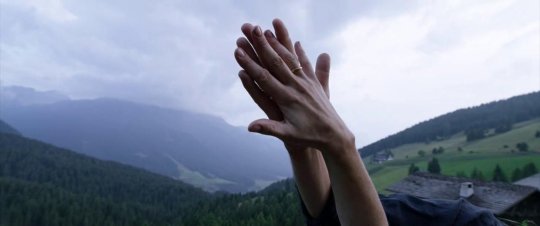



“What comes next is seldom better.”
0 notes
Photo




A hidden life (2019) — dir. Terrence Malick • dop: Jörg Widmer.
95 notes
·
View notes
Video
youtube
That Rubén González scene from Buena Vista Social Club
#music#rubén gonzàlez#ruben gonzalez#buena vista social club#cinema#wim wenders#jörg widmer#jorg widmer#piano#piano music#cuban music#music of cuba#rubén gonzález#brian johnson (editor)
46 notes
·
View notes
Photo










10 Frames
A Hidden Life (2019) Dir. Terrence Malick DoP by Jörg Widmer
#a hidden life#filmedit#terrence malick#frames#jörg widmer#2010s#drama#cinematography#austria#world war ii#august diehl#valerie pachner#matthias schoenaerts#non gif
180 notes
·
View notes
Photo










A hidden life (2019)
112 notes
·
View notes
Photo

There's a difference between the kind of suffering we can't avoid and a suffering we choose.
A Hidden Life, Terrence Malick (2019)
#Terrence Malick#August Diehl#Valerie Pachner#Maria Simon#Karin Neuhäuser#Tobias Moretti#Ulrich Matthes#Matthias Schoenaerts#Franz Rogowski#Karl Markovics#Bruno Ganz#Michael Nyqvist#Wolfgang Michael#Johannes Krisch#Jörg Widmer#James Newton Howard#Rehman Nizar Ali#Joe Gleason#Sebastian Jones#2019
59 notes
·
View notes
Text
A HIDDEN LIFE Review - ***½
A HIDDEN LIFE Review – ***½

This is a very similar film, in certain key ways, to A Man for All Seasons. Both films deal with a devoutly Catholic man, at odds with the tenor of his times, who refuses to take an oath, is harassed for it both by the powers that be and those he thought were his friends, is imprisoned and repeatedly asked to take the oath for the sake of his family, his country, and his life, is finally…
View On WordPress
#2019 films#2019 in Film#A Hidden Life#August Diehl#Film Reviews#Franz Jägerstätter#Jörg Widmer#Sankt Radegund#Terrence Malick#Valerie Pachner#World War II
0 notes
Video
youtube
PINA - "Seasons march" clip - amazing movie for Pina Bausch by Wim Wenders!
* * * * *
3-D Tribute to Artistic Impulse
By A.O. Scott
Dec. 22, 2011
One of the interesting and unexpected film stories of 2011 is about 3-D, which simultaneously lost commercial potency and gained artistic credibility. Those who dismiss the format as the industrial gimmick (and excuse for price gouging) that it frequently is may need to reconsider now that a handful of certified auteurs have given it a try. Steven Spielberg and Martin Scorsese, grand old men of baby-boomer Hollywood, have made 3-D children’s tales (“The Adventures of Tintin” and “Hugo”), which is certainly noteworthy. More remarkable, perhaps even astonishing, is that Werner Herzog and Wim Wenders, stalwarts and survivors of the iconoclastic New German Cinema of the 1970s, have used 3-D in new documentaries.
Mr. Herzog’s “Cave of Forgotten Dreams” and Mr. Wenders’s “Pina” are explorations of the artistic impulse, primordial and postmodern. “Pina” is a tribute to Pina Bausch, the German dancer and choreographer who died in 2009. Her work has appeared on film before; Pedro Almodóvar’s “Talk to Her” uses the dance “Café Müller” as an emotional touchstone. That piece, an obstacle course of wooden chairs and wild emotions set to music by Henry Purcell, figures prominently in “Pina,” encapsulating both Bausch’s aesthetic and Mr. Wenders’s desire to replicate on screen the depths and distances of the staging. A Photo Slide Show of Bausch’s Work
The dances in “Pina” take place on traditional stages and also on city sidewalks and tram cars (in Wuppertal, the northwestern German city where Bausch’s company is based), in forests and fields and, thanks to an especially ingenious coup de cinema, in what looks like a portable box. Alternating between highly stylized, precise gestures — of hands, fingers and faces as well as torsos and limbs — and more flowing and expressive movements, the dancers enact dramas of desire, sexual violence and the passage of time.
The cumulative effect is exhilarating and also a bit frustrating, since so many dances are included and woven together the audience does not have the chance to experience any single work in its entirety. But the power and intelligence of Bausch’s approach, which at times seems more cerebral than sensual, is communicated. And there are moments when her discipline and Mr. Wenders’s visual instincts harmonize perfectly, so that instead of enduring yet another well-meaning specimen of “dance on film” you are experiencing dance and film, fully and simultaneously.
In addition to the performances, “Pina” includes interviews with dancers, their words dubbed over their silent, contemplative faces. Instead of talking heads, they are thinking bodies, reflecting on the influence of their mentor. Their devotion to Bausch is evident, though the glowing tributes they offer also suggest that, like many charismatic artists, she cultivated something of a cult of personality. Diverse in age, body type and background, the dancers — speaking French, Russian, Portuguese, Japanese and other languages — convey their awe and gratitude in notably similar terms. “Pina used to say, ‘Be more crazy.’ ” “Pina used to say, ‘Surprise me.’ ” This is touching, but it leaves any analysis of her creative process and the ideas that drove it shrouded in a mist of generality.
But criticism is not really what Mr. Wenders intends. Choreography is a notoriously perishable art. Dances often struggle to outlive their creators. And “Pina” is, above all, an act of preservation, a memorial that is also a defiance of mortality — completely alive in every dimension.
PINA
Written and directed by Wim Wenders; directors of photography, Hélène Louvart and Jörg Widmer; edited by Toni Froschhammer; music by Thom Hanreich; produced by Mr. Wenders, Gian-Piero Ringel, Wolfgang Bergmann, Gabriele Heuser and Dieter Schneider; released by Sundance Selects. In German, English, Russian, Italian, French, Slovenian, Korean, Spanish and Portuguese, with English subtitles. Running time: 1 hour 43 minutes. This film is not rated.
15 notes
·
View notes
Text
Films of the Year 2020
1) A Beautiful Day In The Neighbourhood
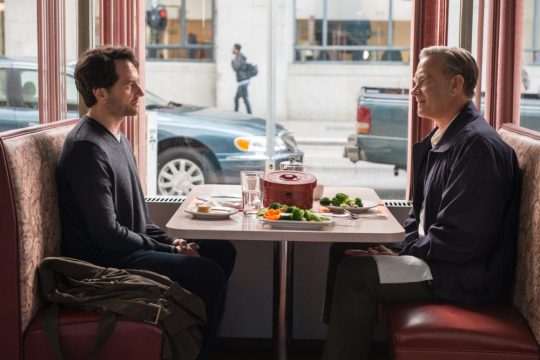
I re-watched this to make sure I wasn’t overrating it, but found myself every bit as moved, almost overwhelmed, as the first time I saw it. The confidence of Marielle Heller’s filmmaking is such that nothing ever feels forced, her themes never have to be underlined, nor does she ever have to draw attention to the quietly excellent below-the-line elements. Tom Hanks exudes warmth and compassion as Mr. Rogers, matched step for step by Matthew Rhys as the guarded, cynical journalist who resists the possibility of goodness and comfort with every fibre of his being. Some of the most masterfully filmed conversation scenes of the year - the diner sequence alone is extraordinary.
2) Parasite
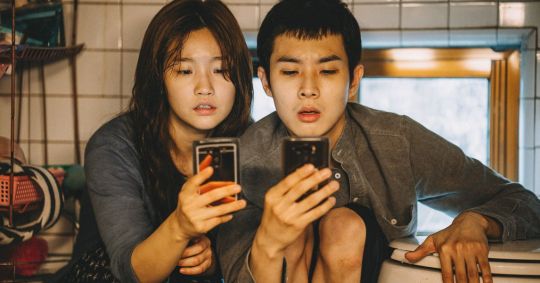
Hugely good fun, wildly unexpected, handles its tonal shifts fantastically with an ensemble cast that’s totally in tune to one another, and slickly channels the capitalist satire of Bong Joon-ho’s earlier films. It’s not that Parasite is saying anything that different or original necessarily, but it feels utterly of its moment and despite its anarchic energy is never glib or peevish. I squealed several times, laughed even more, and the film left me with a weird, immovable sense of melancholy. Deeply impressive.
3) Portrait Of A Lady On Fire
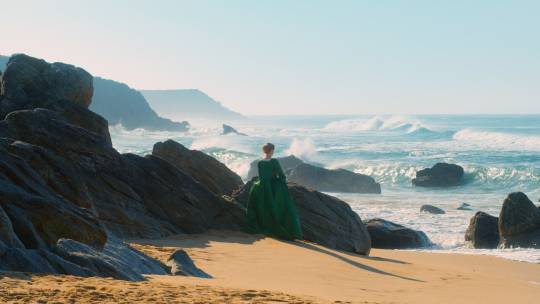
The range that Céline Sciamma has shown over just four films! Deliberately paced without ever feeling slow, I loved how invested this was in portraiture as an art form and how that folded into Marianne’s burgeoning feelings for Héloïse. Unlike a lot of other love stories, and by nature of its subject matter, Portrait is interested not just in how its two protagonists make one another feel but how they perceive one another. The ghostly apparitions that Marianne witnesses feel at first like a false note only for that to pay off beautifully in the final act. Héloïse’s final words are up there with The Lives of Others in terms of last lines that make you break out in goosebumps.
4) And Then We Danced
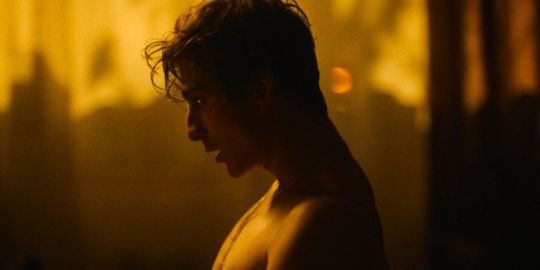
For a film that’s so concerned with the hard lines of its dance movements, it’s appropriate how tuned-in the screenplay is to when it needs to puncture its atmosphere of repressive masculinity with compassion and tenderness. Each relationship in the story is replete with texture and feeling, not just Merab’s rambunctious, chaotic home life, but also his dance partner / best friend. What really made the movie for me was how focused it was on Merab’s own journey, outside of and alongside his relationship with another male dancer.
5) A Hidden Life
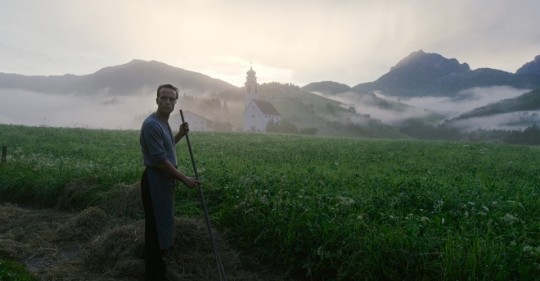
Malick is back, baby! Doesn't quite reach the giddy heights of his filmography up to and including The Tree of Life and the three-hour runtime is a little punishing, but Malick is clearly working with a renewed sense of focus and purpose. Tracking the life of Franz Jägerstätter, a conscientious objector who was executed by the Nazis in 1943, I was unexpectedly and profoundly moved by A Hidden Life’s spiritual curiosity. Franz's commitment to his faith might seem alien, but it becomes clear that it's the only thread he has to hold onto in order to see him through; even his relationship with his steadfast wife is defined by their shared religion. The roving camera and Jörg Widmer's stunning depictions of bucolic life turned sour, as the small village community become spiteful and cruel, also feel like some sort of spiritual rebuke (and it's notable that we're kept closely within Franz's POV rather than venturing out into the atrocities that lie on the margins of the film). I fully lost it when I realised that the title is taken from the monumental final paragraph of Middlemarch.
6) Never Rarely Sometimes Always
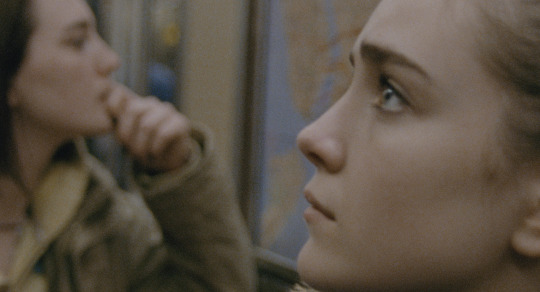
Eliza Hittman’s new film is definitely going where you think it’s going, but that hardly matters when the filmmaking and performances are this strong. Whilst it’s concerned with the difficulties of obtaining an abortion for vulnerable young women, that’s not all that’s on its mind, and I was struck by how well it draws the patriarchal society these two teenagers have to manoeuvre through every day. Hittman’s New York is a nightmare landscape, with Hélène Louvert’s cinematography expressively capturing the sense of oppressiveness and isolation that big cities can have on a person. Like with Beach Rats, Hittman draws fine performances from her leads, ones that say a lot with very little dialogue, and of course the scene that gives the film its name is just fantastic.
7) Corpus Christi

Somehow manages to overcome its reliance on coincidences in the early going to become an exhilarating, deeply-felt film about the failures of organised religion and the limits of faith. Bartosz Bielena could take me to church any day of the week, and he's truly electric as the ex-con who masquerades as the priest of a small town recently rocked by tragedy. The plot could easily be that of a Hollywood rom-com, and it's to the film's credit that, aforementioned coincidences aside, it's always interested in digging deeper. It's incredibly powerful as a testament to how difficult it is to confront the most difficult truths about ourselves and how grief is turned outwards. The visceral, upsetting fight scene that closes the film is memorable, sure, but it’s the troubled character study at its centre that ensures Corpus Christi lingers.
8) Boys State
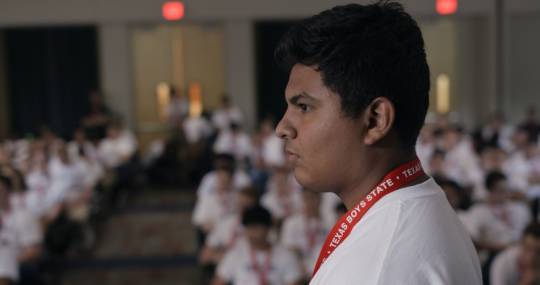
I suppose you might argue that finding a microcosm of American politics at an annual event where a group of 17-year-old boys are asked to form their own government is a little like shooting fish in a barrel, but directors Jesse Moss and Amanda McBaine mine their subject matter for much more than simple prescience. Impeccably cast and edited, it manages to be simultaneously hugely entertaining (with true heroes and villains) and also an insightful, terrifying window into the glibness with which white American men treat both real world issues and anyone on the other side of the argument. There were other, perhaps more accomplished documentaries released in 2020, but Boys State was so irresistibly of its time and so gripping because of that it kept creeping up in my estimation as the year wore on.
9) The Forty-Year-Old Version
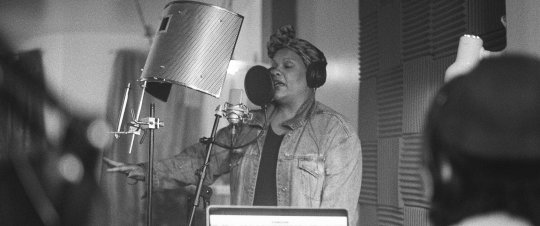
What a fun, smart screenplay this is. Which isn't to say there isn't plenty of other things that impress about this debut feature focused on an almost-forty-year-old Black woman who, frustrated with the dead end her career as a playwright seems to be facing, turns to rap as an alternative means of expression. It's incredibly astute on the ways in which Black artists are forced to compromise to appease white gatekeepers and perceived audiences, a topic that it handles with equal parts anger and wry humour. The film isn't blind, either, to the ways in which Radha's frustrations impact her relationships (particularly with her loyal agent/best friend). When the only complaint you have about a film is that it suffers from a surfeit of ideas, it’s indicative of what a special, unique voice it possesses.
10) Rocks

A huge step up from the stolid, dishwater-y Suffragette. The film’s deceptive simplicity in its depiction of a teenage girl and her younger brother who suddenly find themselves having to navigate an adult world they’re not ready for allows for the performances and screenplay to fill in the bustling, often joyful elements of Rocks’ life. Cast perfectly top to bottom, some of the film’s best scenes are where Rocks and her mates are just hanging out, shooting the shit with one another. And whilst there’s a heart-breaking centre to this particular story, it never feels reliant on pulling your heart strings, or leaning too heavily into the more troubling aspects of Rocks’ life.
Ten performances that I loved this year: Cosmo Jarvis in Calm With Horses, Joe Keery in Spree, Radha Blank in The Forty-Year-Old Version, Delroy Lindo in Da 5 Bloods, Bartosz Bielena in Corpus Christi, Cho Yeo-jeong in Parasite, Hugh Jackman in Bad Education, Alfre Woodard in Clemency, Johnny Flynn in Emma and Haley Bennett in Swallow.
6 notes
·
View notes
Text
A Hidden Life: Review
Note: this is a piece written for a class upon the film’s release that has been edited and repurposed.

A Hidden Life had its local premiere at the Houston Cinema Arts Festival on Friday November 15, 2019. Clocking in at just under three hours, it is an epic, esoteric, and devastatingly beautiful piece of work. It is also a bit of a return to form for writer/director Terrence Malick who spent the last few years in a very productive but divisive period in his career telling stories in modern settings. The film tells the true story of Austrian farmer Franz Jägerstätter (August Diehl) and his family as he refuses to swear loyalty to Hitler and serve in his army. Malick’s penchant for voiceover is mostly used in letters sent between Franz and his wife Franziska (played with boundless wells of empathy by Valerie Pachner) during his imprisonment. Featuring small, but effective performances by Bruno Ganz, Michael Nyqvist, Jürgen Prochnow, Franz Rogowski, and Matthias Schoenaerts, the emotions of the film are brought to light with great effect. It is a marvelous work that displays Malick’s affinity for tortured men finding a place in the universe alongside nature under god. It is a poetic, sweeping, and moody film that ebbs and flows through time while never losing sight of the value of family, love, and kindness. It is a film that feels prescient to the current moment of political upheaval, while never crassly grafting modern sentiment onto its narrative.
Terrence Malick is a filmmaker whose career is remarkably enigmatic. After arriving in 1973 with Badlands, he premiered Days of Heaven in 1978. Then he disappeared, only to re-emerge twenty years later with 1998’s The Thin Red Line. Another seven years passed until 2005 which saw the release of The New World. Then, in 2011, there was an unprecedented shift for Malick after the release of his Palme d’Or winning The Tree of Life. It launched a period of intense creativity for the director that spawned four narrative films, a documentary, and two short films in the span of just six years. This increase in productivity also gave the world his three most divisive films: To the Wonder, Knight of Cups, and Song to Song. These three movies are wholly modern, eschewing the historical backdrop that leant itself so well to Malick’s depictions of earthly divinity and spirituality. While some people embraced his new approach of montage and leaning more toward loose, unstructured expression, almost everyone was taken back by his attempt to find the beauty in a modern world that has so little of that left. There is no denying how strange it is to see a Malick film that has a scene at a Sonic drive thru. Yet, A Hidden Life feels like a perfect synthesis of a film like The Thin Red Line and Tree of Life. There is history, war, and men reckoning with their place amidst it all being told in Malick’s recent style.

A Hidden Life opens with text explaining the true story behind the film and the mandatory oath of loyalty to Hitler that that soldiers had to swear upon being drafted. Then, in a shockingly new technique for Malick, the film uses footage from Triumph of the Will. These scenes highlight the beautiful presentation of evil in Riefenstahl’s film; it is an interesting counterpoint to the film that follows. Where Triumph of the Will uses jaw-dropping filmmaking to highlight a single man being worshipped in an urban setting, A Hidden Life is about a farmer in nature who refuses to submit and follow any one thing but God. Malick is a master of capturing organic awe. Teamed up with cinematographer Jörg Widmer, he has perfected his distillation of tactile sensation. In Malick’s hands, the earth breathes. The grass dances to music of the wind. Dirt and mud are a communion between man and nature. In his best work, the juxtaposition of war or conflict alongside this immaculate magnificence of the world begs certain questions. How can something so evil and vicious exist in a place so heavenly? Do we deserve to be condemned for destroying this loveliness? A Hidden Life focuses on truly exploring these dilemmas through a combination of abstraction and narrative.

The film is shot on wide angle lenses that emphasize the scope of the world in which it takes place. This choice draws attention to the massive blue skies and the rolling hills, but when Franz is in prison, it almost feels like a taunt. There is so much empty space in the frame focused on concrete or bars that was once inhabited by other people or natural objects. One shot, used twice in the film to great effect, is a swooping crane tracking shot of Franz riding into town on a motorcycle. It first appears as Franziska recounts how the two met and later, after his death, as a memory of purity and love that she can fall back on. Another particularly interesting choice with the camera is when it switches to first person point of view. The intense subjectivity of being placed in Franz’s mind only comes twice: when he is being beaten by a prison guard and as he slowly walks to the place of his death. The beating is particularly interesting because the shot holds for longer than would be expected and it forces the viewer to beg for the violence to stop. It is also noteworthy that the film is shot on digital which allows Widmer and Malick to capture images in natural light, even in very dark places. It feels like a great example of how this film blends his classic style with the more elements he picked up in recent years.
Alongside the gigantic scope of the film are smaller character moments that stand out just as much. The film’s central martyr, Franz, is shown multiple times throughout the film doing tiny acts of kindness that bolster his mission to be in harmony with the world around him. During a transfer between prisons, Franz, in handcuffs and uniform helps an elderly woman bring her luggage down from a high rack on a train. Later as he leaves a store, a soldier knocks over an umbrella leaning against a wall before he takes a few steps back and sets it upright. These tiny moments speak volumes to his consideration and reinforce why he so strongly resists the mandated oath to subservience. He will not serve a cause that takes human lives, destroys homes, and sacrifices men for native expansion.
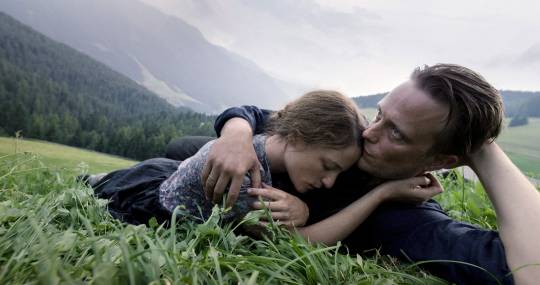
As the credits began to roll on A Hidden Life, I was shaken. For the next ten minutes or so there was an enormous lump in my throat that threatened to break the dam of emotional fortitude and let tears loose by just recalling moments within the film. I found it to be profoundly touching and inspiringly lyrical in its execution. Though I hesitate to use and expression that tends to lean more toward hackneyed cliché, I found A Hidden Life to be an experience rather than merely a film. It paints with a broad brush on a massive canvas in the hopes to reveal universal truths rather than specific reckonings. Certain scenes do occasionally feel repetitive and I am not certain that the choice to use English as the primary language with bits of German thrown in primarily by Nazis was the right one, but these feel like minor quibbles that easily overlooked when appraising a project so massive and noble in its intent. Currently, our world is primed for a movie about what protest and freedom of mind look like under an oppressive regime. Family, faith, and love are not more important than they were previously, but they certainly feel like their significance is in short supply. Malick and his collaborators have given us a film that embraces these ideas; so long as you are willing to embrace the film itself, there is a great power to be witnessed. As the world becomes more barbed and dejecting, I was truly comforted by the film and its effect of slowing down to appreciate what truly matters. Towards the movie’s closing moments, a young man, about to executed, is given a paper and a pen. First, he pauses, then turns toward Franz and asks, “What do I write?” This question is massive; loaded with the implications of countless other questions. Where do I start? What words can define a life? Will anything be good enough? Who do I address this to? What do I write? For three hours, this film put me closer to potentially having an answer to that existential query.
A Hidden Life is now streaming on HBO Max.
3 notes
·
View notes
Photo










Cinema without people: A hidden life (2019) — dir. Terrence Malick • dop: Jörg Widmer.
#A hidden life (2019)#my screenshots#Terrence Malick#cinema without people#cinematography#Jörg Widmer
10 notes
·
View notes